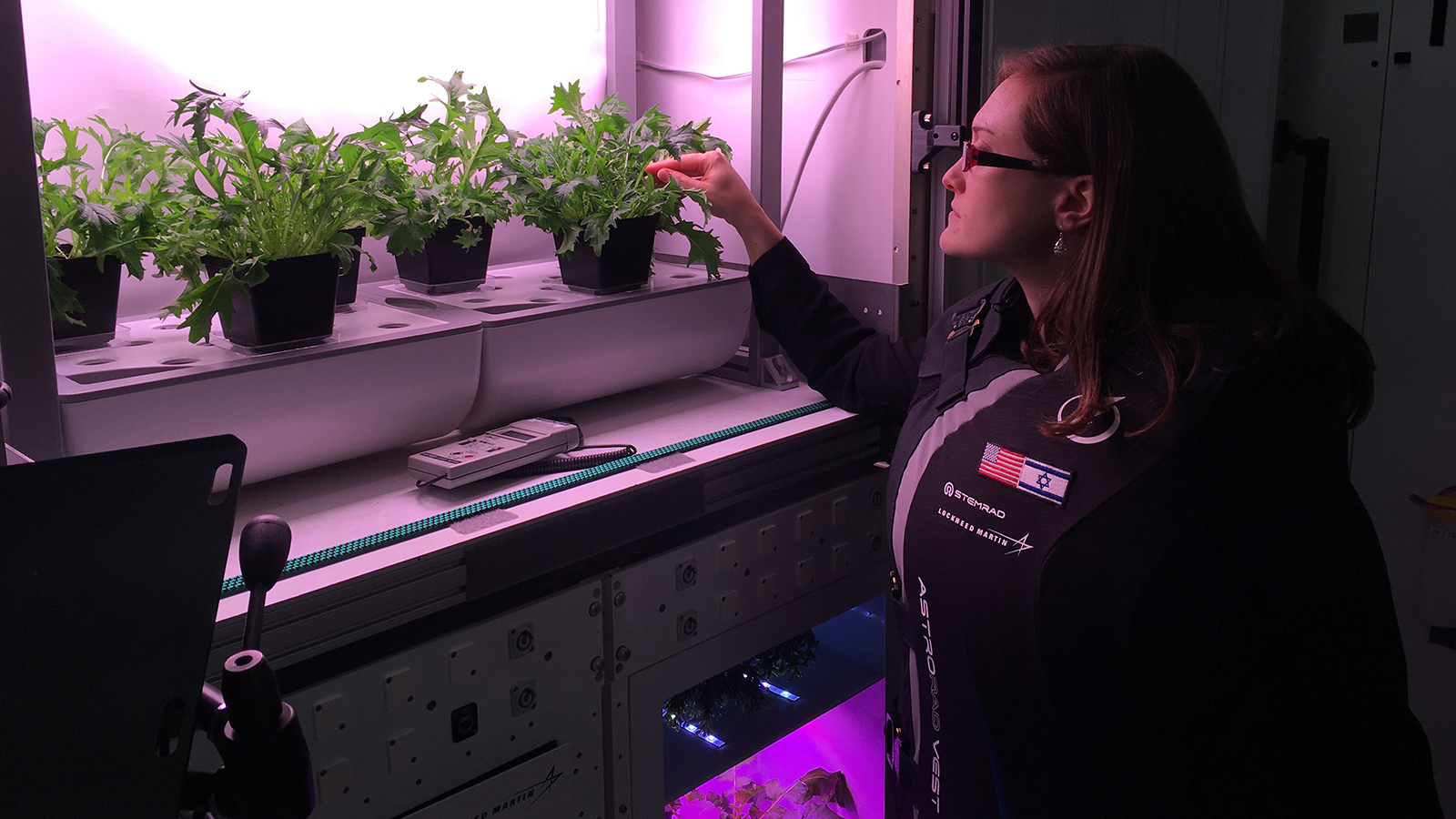Stay Up to Date
Submit your email address to receive the latest industry and Aerospace America news.
Female astronauts will try them out first ahead of Orion trial
INTERNATIONAL ASTRONAUTICAL CONGRESS, Washington, D.C. — Female astronauts rotating through the International Space Station over the next year will take turns trying out a radiation-shielding vest like those that could someday protect crews headed for deep space in NASA’s Orion spacecraft.
A fully functioning prototype of the vest, called AstroRad, is headed to the space station on the uncrewed cargo resupply mission scheduled to launch from NASA’s Wallops Flight Facility in Virginia on Nov. 2.
The vest was made by the Israeli startup StemRad with management help from Lockheed Martin.
Women will try the vest first because their physiology makes them more susceptible to cancer-causing radiation. Their bodies tend to be smaller, providing less tissue to shield their organs from radiation. Plus, they have breasts and ovaries that need to be protected.
“If we can design a solution that works for the females, then we’ve already covered the males,” explains Kathleen Coderre, a systems engineer at Lockheed Martin, which makes the Orion capsules and has a series of agreements with StemRad to help it apply for NASA funding and navigate through various departments.
Each female astronaut will wear the vest intermittently over the course of her ISS rotation for a total of about 24 hours, performing a variety of tasks to test comfort and job proficiency while wearing it. A second test planned for NASA’s Artemis 1 uncrewed mission around the moon and back will determine how well the vest could protect astronauts from solar storms in deep space that could expose them to intense bursts for hours or days at a time.
The German Aerospace Center DLR is making two sensor-studded mannequins for the Artemis 1 flight. NASA will put a vest on one of the mannequins while the other serves as the experiment’s control. The data should show how well the vest shields against the Van Allen radiation belt.
StemRad’s connection to spaceflight came about through serendipity. At a 2015 meeting to promote economic cooperation between Israel and the state of Florida, StemRad executives met business developers from Lockheed Martin’s human spaceflight division.
The executives suspected there were space applications for the vests they had created to shield emergency responders from radiation in the event of an accident at a nuclear power plant. The first-responders needed an anti-radiation garment that would be practical for the fast action required in an emergency. StemRad opted for a vest, rather than attempting a full-body garment, since the most sensitive organs are in the torso. They devised a vest whose thickness varies to match the average distribution of human tissue. Where there’s more tissue, the vest can be less bulky, because some radiation protection is already provided.
This basic concept had to be adapted for space, however. Materials with heavy metals were required for protection after nuclear accidents on Earth, but in space high-density polyethylene was preferable because it would create less secondary radiation when struck by solar particles. For flexibility, small, hexagonal-shaped columns of the material fit closely together, but don’t stick together.
If the vest gets selected for deep-space missions, each astronaut will get fitted for one, so the sizes and weights will vary — about 27 kilograms. Astronauts floating in microgravity won’t feel the weight but should notice a difference when they change directions, says Oren Milstein, StemRad’s CEO and chief scientific officer.
Astronauts already wear dosimeters to tally up their radiation exposure, says Lockheed Martin’s Hesham Hussein, Orion crew radiation lead research engineer. They can’t go to space anymore if they reach a certain threshold.
When Orion’s radiation sensor detects a spike from a solar storm, astronauts likely would put on their vests, remove cargo from a storage container and get inside this radiation shelter. If the radiation levels stay high for very long, the crew will likely want to go outside the shelter to work, which is when the vest would be especially important, says Hussein.
About Amanda Miller
Amanda is a freelance reporter and editor based near Denver with 20 years of experience at weekly and daily publications.
Related Posts
Stay Up to Date
Submit your email address to receive the latest industry and Aerospace America news.




